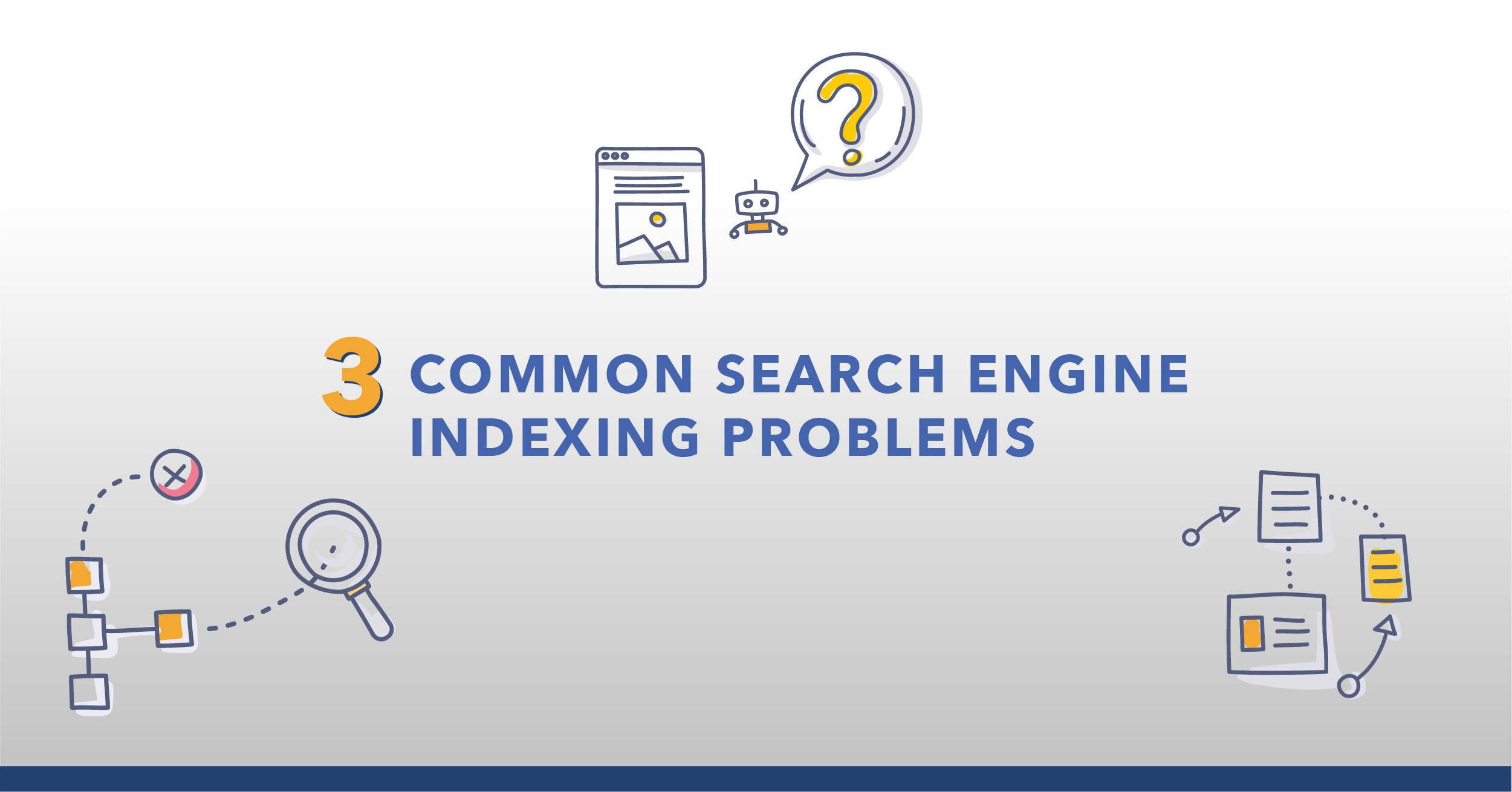If you find yourself having to spontaneously take on the role of SEO at your company, you may be feeling a little frantic.
Perhaps budget cuts changed the operations at your company, or a fellow colleague was furloughed. Regardless of the cause of the change, the situation is the same: you’re now responsible for SEO at your company, and you’re probably thinking, “What do I do?”
While enterprise SEO can be multifaceted and complex, there are simple best practices you can follow to succeed. By the end of this article, you’ll have a proper understanding of search engine optimization and what steps to take.
Note: If you’re completely fresh to SEO, we recommend that you read our SEO basics guide first to properly learn the concepts. It covers in-depth our unique approach to SEO: URA. This framework (short for usability, relevance, authority) has let countless enterprise organizations grow their search visibility.
The Cliff Notes to Enterprise SEO
We’ve created a unique approach to help enterprise companies achieve repeatable results in organic search. It’s our framework to simplify, structure, and scale your SEO efforts.
Here, you’ll learn the most important aspects of SEO so you can succeed in your role. By the end of this article, you’ll have a sense of what SEO is all about, and how you can optimize for success.
Invest in Software (If You Haven’t Already)
SEO software is a necessity, and your company probably has some marketing technology in its tool belt already. It could be various point solutions (specialized tools built for accomplishing one task in the SEO life-cycle) or it could be an SEO platform.
As an enterprise company, you would benefit most from an SEO platform. An SEO platform gives you reliable data to operate from a single source of truth, which is crucial for large enterprise companies. Individual point solutions get the job done, but your data is going to be decentralized, and you’ll lose valuable time trying to make sense of the numbers.
seoClarity’s platform helped SEOs allocate their time toward strategy execution instead of constant planning and analysis.
We’re just one of many SEO platforms on the market. Each is going to provide different capabilities at different price points, so it’s best to read up on the best SEO platforms before you pick one.
Align With Other Teams
Transparency is key in your new role. You want to show the company what is happening with SEO initiatives, and collaborate with other departments to find common priorities.
Start to build an alliance with other team members in SEM, social, development, and marketing to share ideas. If you’re feeling uncertain about something, a collaboration can get the ball rolling again.
One way to initiate these conversations is by internal company events like a lunch and learn, where members of other departments come together to learn about what the SEO program is doing. This allows you to share the benefits of SEO to the company, and opens the door to those collaborative conversations.
But don’t just rely on others to support SEO initiatives — embrace other departments’ current processes, and think about what you can do to add value.
Technology can help on this front, too. Jira, for example, can be used to add SEO tasks and requests lists of current projects to align the company-wide goals.
Make SEO a Team Sport
Similar to aligning with other teams, also show your company that SEO can positively impact all departments. This goes back to identifying other departments’ tasks, and seeing how you can add value.
What you may not know is that SEO processes and data impact every department in an organization.
To see how, I recommend this resource: 9 Ways SEOs Bring Value to Every Team in Their Organization.
When you spread SEO throughout the company and make these various other departments realize that organic search is beneficial to them and their goals, your job gets that much easier! Support from other departments and colleagues means more time to actually work on execution.
Do keep in mind that the way you talk about SEO matters, as it will impact how it is structured within your organization (and subsequently scaled). Again, the resource above is great for learning how to speak about SEO within your company.
Establish SEO Reporting
When you start to collaborate with colleagues, spread SEO in your organization, and execute strategy, you’ll need to establish SEO reporting. This is the key to understanding how your work is impacting the company at large. (After all, your boss will want to see specific results.)
Customizable SEO dashboards are helpful to highlight your specific wins and show that you are meeting the set goal. But when you’re creating your SEO reports, be sure to align your metrics with the metrics that your analytics or executive team are using to measure performance. This ensures that the metrics that you track for SEO are the same as those that matter most to the executives. Show them the information they want to see!
Scale Your Strategy With SOPs
Standard operating procedures let you scale your work so you can save time but reap more rewards. SEO efforts compound, so if you focus on proper content creation and optimization tactics, you’ll see long-lasting results.
Our team has put together proven workflows that deliver results consistently over time. They’re categorized in our Learning Center for easy access.
Consider Consulting Services
A lot goes into SEO, so don’t feel badly if you can’t handle it all by yourself. Outside consulting services can help you get the job done. There’s a great importance of utilizing outside vendors so you can focus on internal communications and high-level strategy.
At seoClarity, we have the Professional Services team that allows you to extend a small SEO team into something more powerful.
Create Testing Methodology
Garner even more support for organic search by forming a procedure to show results. I recommend you create a methodology for testing performance in a small subset.
My colleague, Chris Sachs, walks through exactly how to do that, here: Track a Million Keywords (Without Actually Tracking Them): Statistical Sampling in SEO.
When you test and analyze, you can adapt accordingly to always be on the right track.
SEO Mistakes to Avoid
While there is a lot of potential to succeed in SEO, there is also a lot of room for mistakes. SEO is tricky after all; especially at the enterprise level.
These mistakes don’t just damage the progress of your current project, they can also damage your search visibility on the SERP, which means your listing isn’t being seen.
A few mistakes to watch out for are de-indexing and blocking, where your web pages would have no way of making it onto the SERP at all; missed user intent, where you create content but not for the same reason the user is searching for; and non-mobile friendly design, which in today’s world just isn’t an option with the amount of people searching on mobile.
When you familiarize yourself with potential problems, you’ll see that these problems are easy to avoid. And if they do come up, they're fixable! This, again, is why SEO software is so invaluable: One great feature is the ability to set up automated alerts so you never miss a potential problem. Also, it’s a smart idea to gain access to your company’s GSC account so you can so you can retrieve messages from Google on any issues.
Recommended Reading: 15 Common Technical SEO Issues and How to Solve Them
SEO Glossary: Know the SEO Elements
SEO has some pretty niche language, but once you understand it you’ll be able to take full control of the position you were put into.
- Anchor Text - Clickable text in a link which should utilize the target keywords to an extent. A good first step into user experience, accessibility, keyword targeting, internal linking, and duplicate content projects. Anchor text makes it easy for a user to navigate a site, which boosts their user experience.
- Keyword Research and Keyword Targeting - Every web page should have corresponding demand that drives the search experience. Keyword research is the first step in creating new content for a website by understanding how people are looking for your product and/or service.
- Optimization - This is your main task. You need to broadly improve the site for the search experience, which will lead to an increase in search visibility.
- Queries - Entry the searcher makes to trigger a SERP, shared by Google via Google Search Console.
- Ranking factors and Algorithm - No one knows Google’s precise methodology for determining rankings on the SERP, but ranking factors are areas on the site that are judged in this calculation. Currently, we know of 200 ranking factors.
- Search results - The websites that appear after a user makes a search. It’s changed a lot over the years, and has many experiences now. Google’s own SERP features can take up a lot of space on the results page. These features include things like the Answer Box/Featured Snippet, People Also Ask, News, Videos, Local Pack, and more.
- Sitemap - A special file with all the URLs of a website that should be maintained. The sitemap tends to house all the important pages of a site, and alerts the search engine (and its crawler) what pages are the most important.
- Title Tags and Meta descriptions - Meta data informs the search engine and user even more about what your page is about. They directly impact the SERP appearance here, because both the title tag (i.e. the listing’s headline) and the meta description (i.e. the description under the URL) both appear with the SERP result. Title tags are a great place to start reviewing how your site is presenting itself to Google. You can test its level of optimization with a title tag test.
- Web Page and Duplicate content - Google stores all the pages, so don’t have duplicated entries for the same intent. Duplicate content can actually result in a penalty.
To learn more SEO terminology, refer to our SEO Basics: The Guide post.
Conclusion
SEO definitely has its nuances, but with a few resources in your pocket, you’ll be able to succeed like a champion. When you form workflows and report on your progress, you’ll continue to learn along the way and adapt to your new situation.
If you need an extra set of eyes to analyze your data, consider our Professional Services’ Managed Services offering. Our team works as an extension of yours to accelerate your SEO growth and increase your KPIs.
Now go on and show them what you’re capable of!







1 Comment
Click here to read/write comments